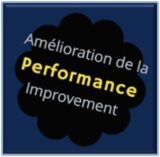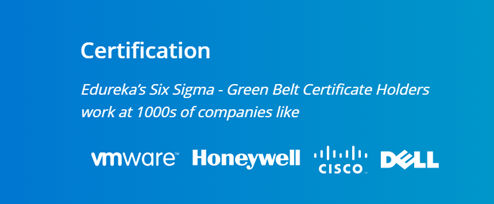A selection of the best training management tips
Whether you’re a new or an experienced trainer, a training planner or a training manager, free training management tips are always welcome, especially if you believe in continuous improvement for yourself, your training department or your training techniques.
I’ve conducted thousands of training sessions over the years and trained trainers in every parts of the world. Even with different cultures, different languages and different habits the adult learning principles and basics are the same everywhere. Yes, of course, you need to adapt when dealing with different cultures but the main guidelines apply.
Management tip 1: Training must be Fun & Memorable
YES, every training you conduct, or every training you attend must be a fun, memorable, enlightening and enjoyable experience, filled with new creative ideas and exercises. There is nothing less motivating for an adult than to attend a boring or repetitive training or even worse a boring lecture. Check the book Telling Ain’t Training by Harold D. Stolovitch!
Summary of the trainer's role and responsabilities

- Apply the Competency Based Approach
- Prepare the training activity
- Transfer his or her knowledge and skills
- Evaluate the learnings
- Evaluate the quality of the training sessions, including self and material
- Participate in the management of training
- Represent the company as an ambassador
Management tip 2: How to conduct a training session
There are a few basic things to know about adult training or “andragogy” compared to “teaching” kids that you absolutely must take into account before conducting training. There are 4 basic principles:
- An adult must be ready to learn – Find common points with them “What’s in it for me?” open the jar.
- Adults have experience – Train to their level, use their experience, be attentive to their life experience. Start from what they know, the real.
- Adults are autonomous – Let them participate, contribute to the learning process – use their ideas, suggestions, solutions, information and examples.
- Adults learn when put into action – “If you don’t use it, you’ll lose it!” Do as much hands-on as you can with them using concrete and realistic applications.
Management tip 3: Preparing your training session
The preparation doesn’t start with the trainer but rather with the direct supervisor or the management team. In order to fully engage your employees in their training, they need to be prepared, again refer the first principle “What’s in it for me?”
I’ve seen too often employees arriving in a classroom and not even know what course they’re here to attend. Or often, when presenting the objectives, they say “This is not the course I needed or asked for”. They are simply told to attend training without even knowing why.
The learning “path” of an employee starts way before they sit in class or login to their computer. They need to know why they go to training, and it has to be done by their direct supervisor or the management team.
Sending employees to training they don’t need for their job, will discourage them to attend anymore training sessions in the future and it will be extremely hard to convince them otherwise, even if the next training is important for them.
management tip 4: conducting your training session - step by step training management class
After you’ve planned everything, the room is ready, the trainees have accepted the invites, your material is ready and tested, especially all the multimedia, the exercises, the Powerpoints, the e-learning, the videos, the online plateforms or whatever methods you use… the day has come to actually conduct the training.
Tell your trainees who you are
- Your credentials, why are you a trainer on this subject
- Explain where you’re from and where you come from
- Your experience as a trainer in this field
Find out who they are by going around the room (in class or virtual)
- Ask their names and experience
- What are their expectations
- Ensure they have the proper prerequisites for the course
- Make them laugh
- Try to figure out who will be able to help you most
Establish the group rules
- With them, establish the breaks
- Have their cellphones, tablets and PC turned off
- The HSE aspects (Emergency procedures, Muster point, First aid)
- Have them agree to respect the rules
Present the general learning objective of the course
- Remember, this is a single objective with a single action verb, a performance criteria and a context for evaluation
- Ensure everyone adheres to the objective and are here for the right course (The adhesion of each trainee to the objective is a major part of the motivation to attend the course)
- Clarify any misunderstanding of the objective
Present the breakdown and the specific learning objectives of the course
- Explain how the course will be conducted, the activities, the learning revisions*, the practical exercices
- Make sure one last time, that everyone are here to attend this specific course.
* I personally do not use the terms quiz or test for a course. The goal of a course is to transfer a competence to others. The evaluation is also a part of learning as it is a training activity, so it shouldn’t be called “test” unless it is required for a certification or a licence, etc. Plus the term test stresses the trainees before we even start.
Why?
- Because, you don’t know them and they don’t know you
- The Icebreaker should be a fun experience, but a learning experience as well
- It could be a pre-revision of their knowledge
- Fun facts about their work
But in any case, it should set the mood for an enjoyable journey with them. Remember that training must be fun and the trainees need to trust you and the course content so that they remain motivated throughout the whole duration of training.
The best way to maximize the transfer during training is to have your trainees active for at least 70% of the time and passive for only 30% of the time. This simply means, that they need to be active more than the trainer. Here are a few things to keep them active:
- They take part in a guided discussion
- They experience something with a structured guide
- They take part in role plays
- They answer questions (provided you give them time to answer) by verbalizing their answers. The verbalizing of an answer increases the retention of the information.
- They play a game (with learning objectives)
- They do research by themselves or as a team, etc.
Note that during a demonstration they are not active, they are receptive
Use these adult training principles:
- Stay with the Structure of your course, dose the information and do regular spot checks with your trainees.
- Keep your trainees Motivated, readjust as required
- Ensure the trainees are Attentive to every part of the course. Do not lecture them for more than 10 minutes, attention goes down after only a few minutes, you need to interact with them continuously.
- Put them into Action as often as possible with creative learning activities. Remember you don’t learn how to ride a bicycle by looking at it.
- Give constant constructive Feedbacks and listen to their feedbacks
- Have many Repetitive exercises ready, the more they repeat something, the more they retain. No one laced their shoes correctly at their first attempt.
- Check if there was a Transfer of competence by giving a revision of learning during a module, at the end of a module and at the end of the course.
Have your trainees complete a learning revision:
- The revision can be oral or written.
- It can also be an individual or a team practical exercise.
- But you need to ensure everyone has a full grasp of the the first module before moving on to the next.
Apply the same guidelines throughout the course. Readjust your training as you go. It is better to skip the theory, in case you run out of time, than skipping the practical exercises. Inexperienced trainers tend to skip those exercises so that they can cover the theory.
Have your trainees complete a learning revision at the end of each modules or sessions:
- Again the revision can be oral or written.
- It can also be an individual or a team practical exercise.
- But you need to ensure everyone has a full grasp of each module before moving on to the next.
There are multiple reasons for the evaluation of a course
There can only be learning, when a proven transfer of competence has been done.
There are other models, but let’s use this “summary” of Kirkpatrick’s model, because it is one of the most used and recognized in the world. According to his model, there are 4 levels of evaluation:
- Reaction (Appreciation): You want to know the training experience of your trainees, this way you can improve yourself, your training material or your training strategies and methods for future training
- Learning (Transfer): You need to ensure that there was a transfer of learning from you to your trainees or betweeen each other.
- Behavior (The application): Same as with the transfer of learning, there can be learning only if there was a behavioural change so that the on-the-job performance may improve.
- Results (Added value): Or the Return On Investment (ROI). Although very difficult to evaluate, it is a key indicator that training was successful by verifying results. This can be done by putting aside all organizational changes, new equipment, new SOPs and everything not related to training and isolate only what is directly linked to the training itself.
No matter which evaluation you look at, all 4 of them should help you improve the efficiency and the management of your training programs, and applies to all types of training. The main goal is to improve the results and performance of your organization.
As mentioned earlier, training should be fun. Why would anyone want to attend a boring, exausting training?
- So forget your dull face at home and get the entertainer out.
- Speak clearly, loudly, vary your voice tone and sweep the room with your eyes continously so that you don’t leave anyone aside
- Without turning into a circus, be funny, use good timely humor, joke with your trainees but DO NOT make fun of them.
- Prepare fun and engaging exercises and make sure all of your trainees fully participate.
- Remove all the “nice to know” information from your course material, this could distract and you will lose your trainees’ engagement.
- Congratulate the efforts and increase the standing of your trainees throughout the session.
- Although various training methods should already be included in your course when it was designed, often use various pedagogical methods and training activities.


